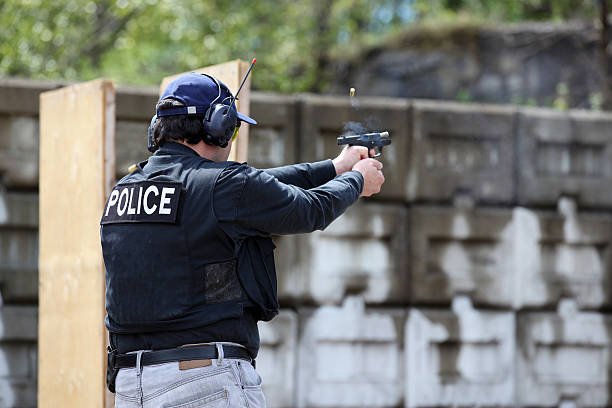
Police training ranges are critical for preparing officers to handle real-life situations safely and effectively. These facilities must support different levels of firearms training, tactical movement, and scenario-based exercises. Every element of the design influences how well officers can train and how safe the environment is for everyone involved. Proper planning ensures that ranges meet strict safety standards while still providing a realistic experience. Agencies often seek designs that are flexible and scalable, allowing them to adapt to evolving training requirements. Many also look for innovative layouts and technology integration to improve efficiency and performance. Choosing to build a law enforcement range with these goals in mind creates long-term value for agencies and their communities. The focus is on creating a training space that delivers effective results while supporting officer readiness. Effective police training ranges require careful consideration of safety, technology, and user experience. The goal is to design a facility that supports practical, efficient, and realistic training programs.
Safety and Structural Planning
Safety is always the foundation of any police training range. These facilities are designed with secure backstops, bullet containment systems, and clearly defined shooting lanes. Strong ballistic protection helps prevent accidents and ensures that officers can focus on their training. Many designs also include observation rooms so instructors can monitor training sessions safely. Emergency protocols and safety signage are integrated into every aspect of the facility. Noise reduction measures help limit hearing damage and improve communication during exercises. Air ventilation systems keep the environment safe by removing smoke and airborne particles. This planning creates an environment where officers can train confidently and effectively.
Flexible Training Environments
A well-designed range offers flexibility for different types of training programs. Some exercises focus on stationary shooting, while others emphasize movement, cover, and tactical decision-making. Facilities often include modular barriers, movable targets, and configurable spaces to meet various training needs. This versatility supports both basic firearms instruction and advanced tactical exercises. Agencies benefit from having one location that can serve multiple training purposes. Ranges with adjustable layouts can also accommodate special training scenarios and simulation exercises. This helps keep training programs fresh and relevant. Flexibility in design ensures the facility remains valuable for many years as training requirements change.
Technology Integration
Modern police training ranges often include advanced technology to enhance performance. Programmable target systems create realistic scenarios that improve officer decision-making under stress. Digital scoring systems allow instructors to track performance quickly and accurately. Video recording tools provide valuable feedback by capturing real-time training sessions for review. Some facilities also integrate virtual training systems to supplement live fire exercises. Technology helps streamline operations and provides valuable data for improving training outcomes. It also reduces the administrative workload by automating certain tasks like scheduling and reporting. These solutions create a more interactive and effective training environment. A focus on technology ensures the range stays competitive and functional for long-term use.
Comfort and User Experience
The experience of officers and instructors matters when designing police training ranges. Comfortable shooting lanes, climate control, and effective lighting create an environment conducive to learning. Break rooms, storage areas, and well-designed waiting spaces improve convenience for users. Proper acoustics reduce stress and make communication easier during exercises. Designing for comfort also reduces fatigue, which can improve performance during training. Many agencies invest in facilities that feel professional and well-maintained, which boosts morale. A pleasant environment encourages officers to engage more with training and return for regular practice. These design choices show that agencies value both safety and user satisfaction. A range that supports comfort and efficiency leads to better overall outcomes.
Long-Term Maintenance and Scalability
Designing a police training range with future growth in mind is essential. Facilities built with durable materials and easy-to-maintain systems lower operational costs over time. Scalable designs allow for the addition of new training features or expanded space as demand grows. Agencies often select modular solutions so upgrades can be made without major disruptions. This approach supports evolving training needs and changing technology. Routine maintenance becomes easier when infrastructure is designed with accessibility in mind. Planning for growth helps ensure the facility remains relevant for decades. When you build something to grow and last, it turns into a wise investment for the future. This ensures agencies can continue to meet training demands effectively.
Designing effective police training ranges requires a balance of safety, technology, flexibility, and user experience. By focusing on these key elements, agencies can create facilities that meet current needs while supporting future growth. The right layout improves efficiency and supports various training programs. Technology integration enhances performance tracking and realistic scenario training. Comfort-focused designs boost morale and improve training outcomes. Thinking ahead about the long term means the facility will keep working well and stay affordable. When done correctly, these training ranges strengthen officer readiness and community safety. Building thoughtful and effective training facilities is an investment in both law enforcement and the public they serve.



